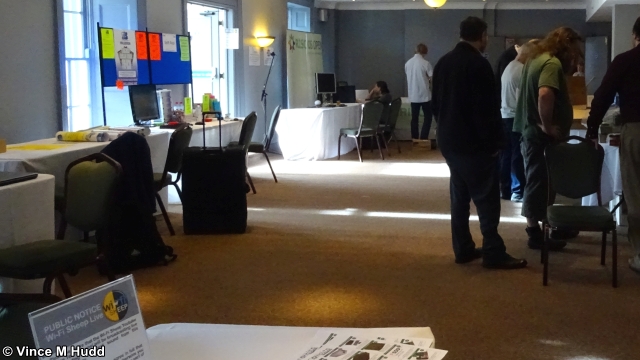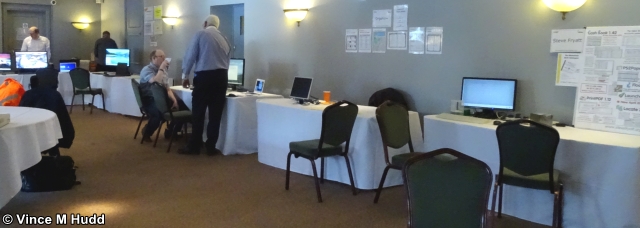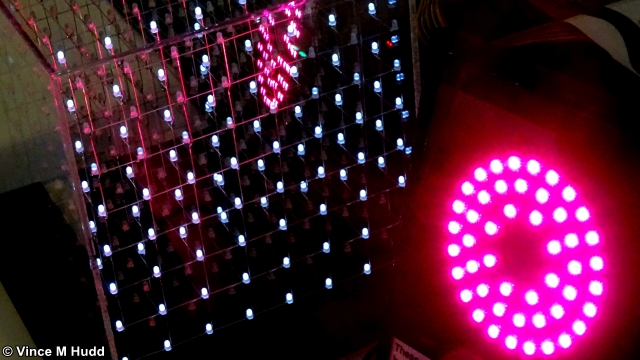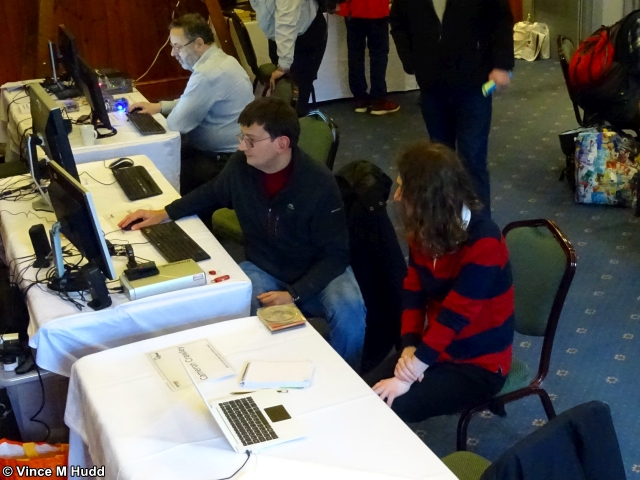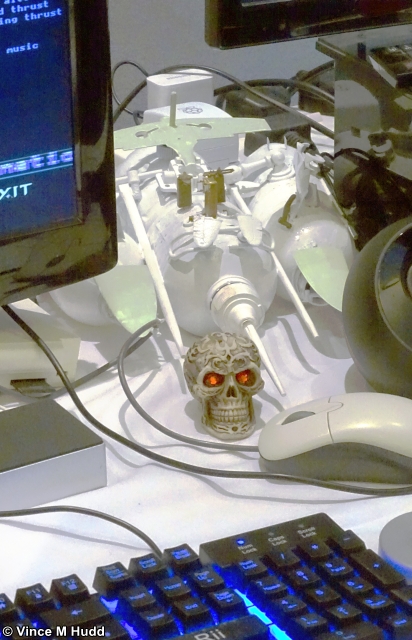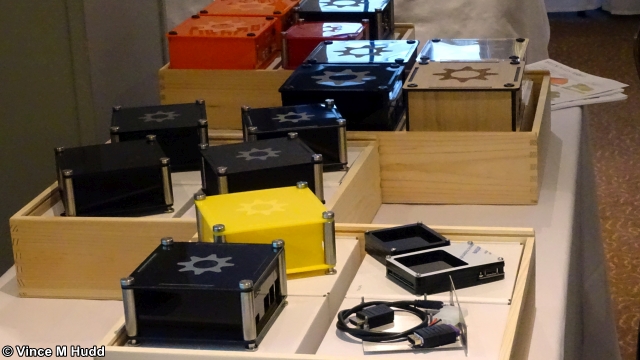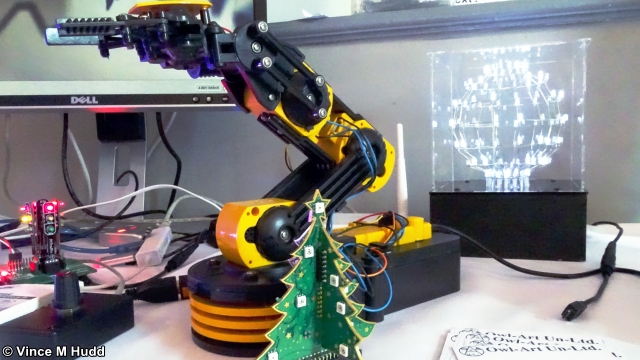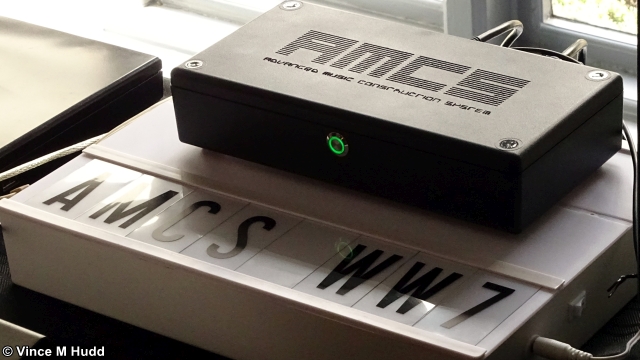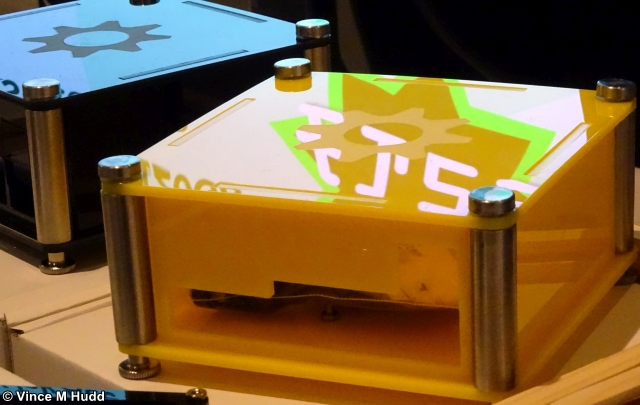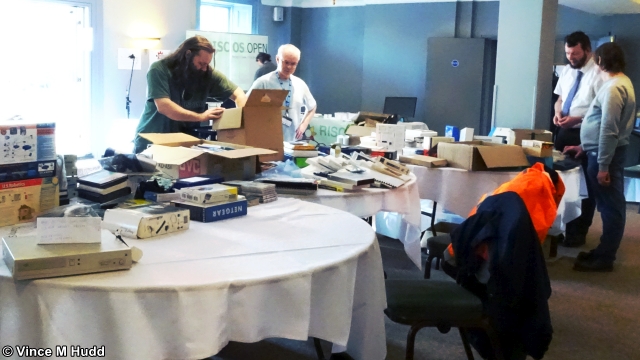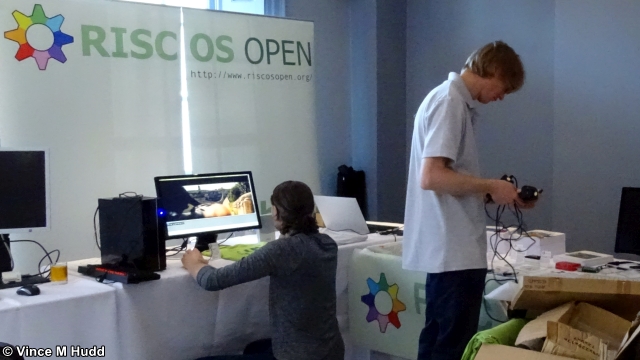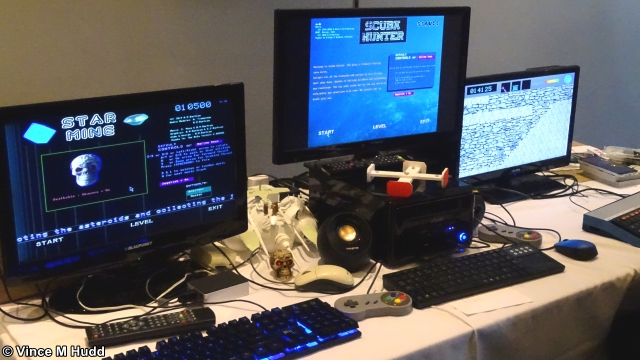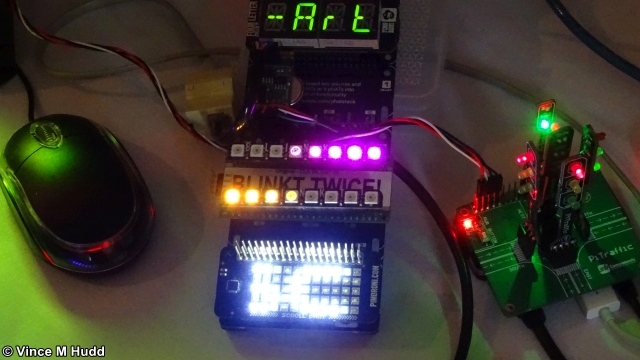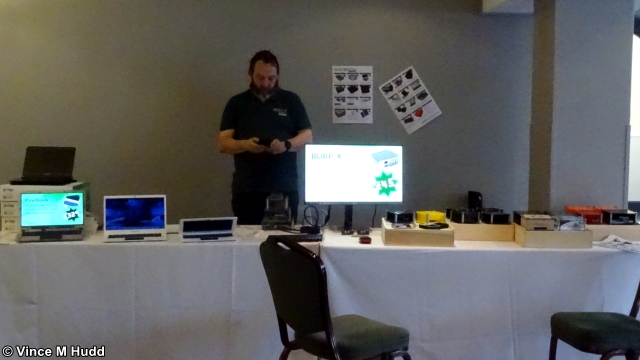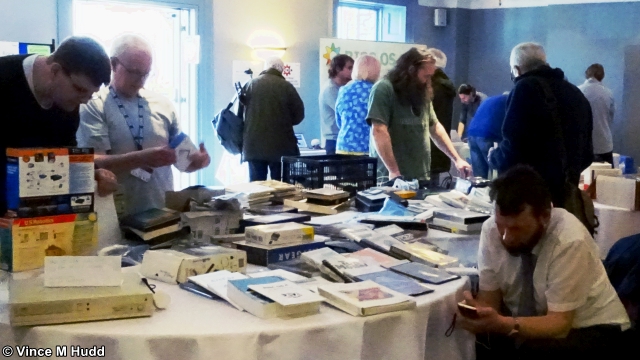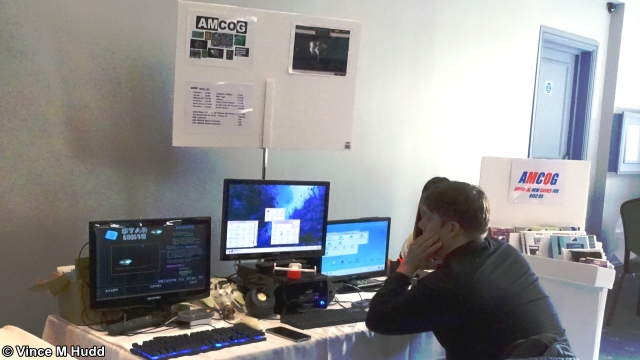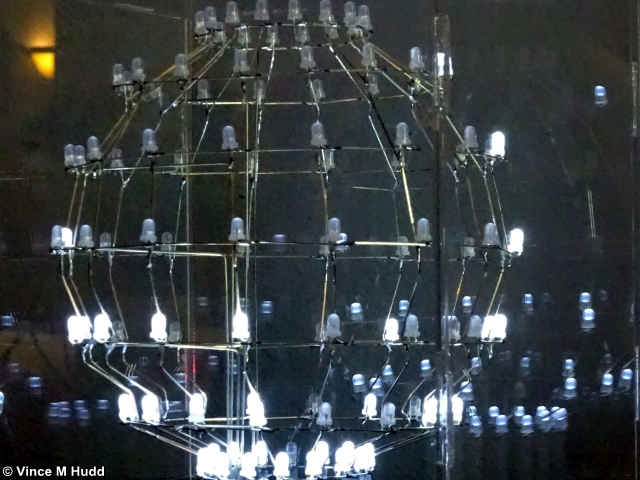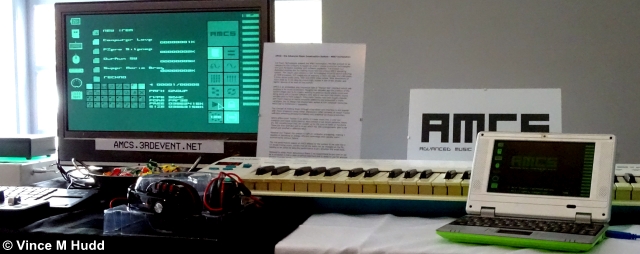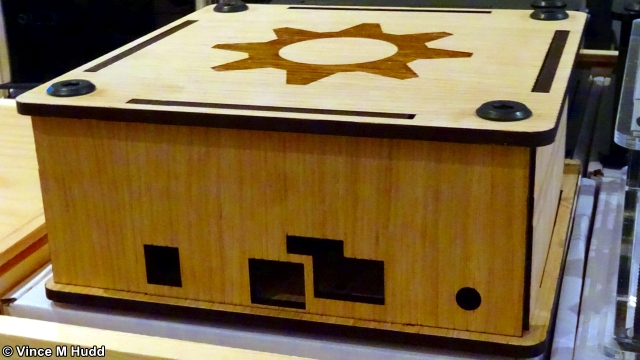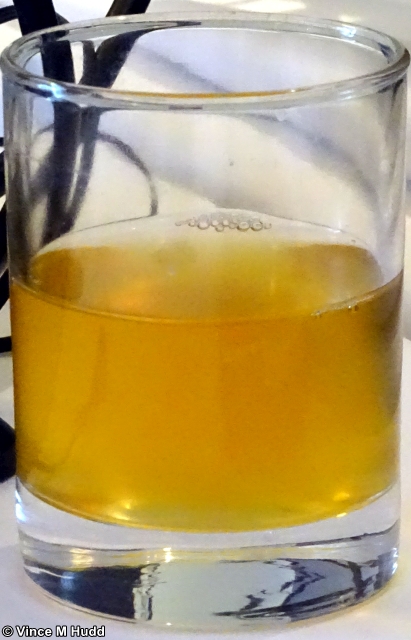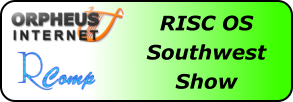I don’t think anyone can possibly disagree with me when I say that 2020, so far, has been an unusual year. Most of the world is in some form of lockdown due to the SARS-CoV-2 (novel coronavirus) pandemic, with movements beyond our homes and interactions with people beyond our own households at a minimum – which means (in a RISC OS context) shows and user group meetings aren’t taking place.
The first major show to be affected was Wakefield. Originally scheduled for 18th April, the 25th annual Wakefield show will now be taking place next year – which does now mean it’ll be taking place twenty five years after the first, rather than twenty four, so there is that. Over in mainland Europe, the RISC OS eXperience was set to take place on 16th May, but that too has been cancelled.
However, some things are normal – and one of those things is how long it takes me to write show reports. In fact, to emphasise just how normal things are in that respect, I believe I’ve taken even longer on this one than usual! Wait, no, that’s weirdly contradictory, isn’t it? Let’s just pretend it made sense and move on…
Here at last, then, is a run down of what happened at the Southwest Show 2020, which took place on 22nd February at the Arnos Manor Hotel in Bristol.
The main event was held in two rooms, and this report will follow a vaguely clockwise path around the first room, switching an anticlockwise route around the second room, then back into the first, continuing the original direction. There was also a separate room – actually the hotel’s chapel – used for the show theatre, and the recordings are already available on the RISCOSitory YouTube channel. The individual videos will be linked at the appropriate points below.
Andrew Conroy and Southampton RISC OS User Group (SROUG)
Upon entering and handing over your readies the first exhibitor you’d meet on this path would be Andrew Conroy. Confused about when Christmas ended, Andrew was displaying a selection of flashing lights – his table was adorned with LEDs galore.
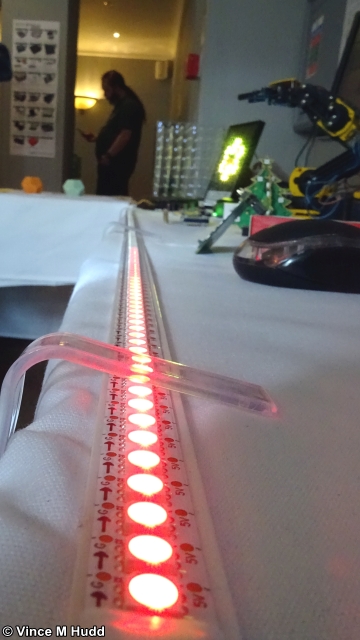
Beyond making his stand look like the Griswold family home at Christmas or the UFO from Close Encounters of the Third Kind, the whole point of the lights was actually to demonstrate interfacing with the Raspberry Pi using BBC BASIC. As such, Andrew’s toys weren’t limited to just lights – he also had a robot arm, for example, and a set of power plugs that could be controlled from the Pi, via a PiMote HAT (Hardware Attached on Top).
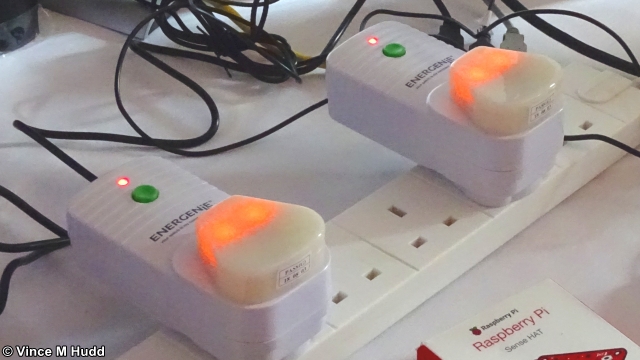
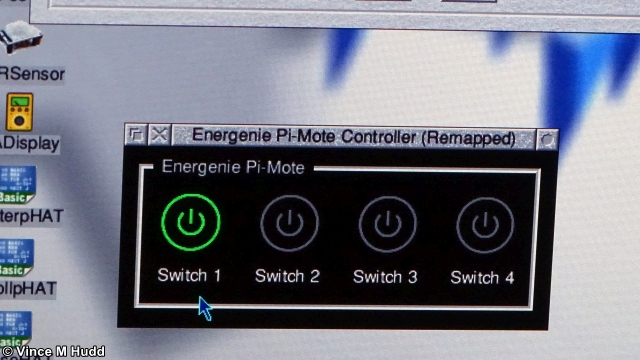
Using the control software – which was running on RISC OS Direct – it was possible to switch either of the two power supplies off or on, thus removing or providing power to whatever was attached to them.
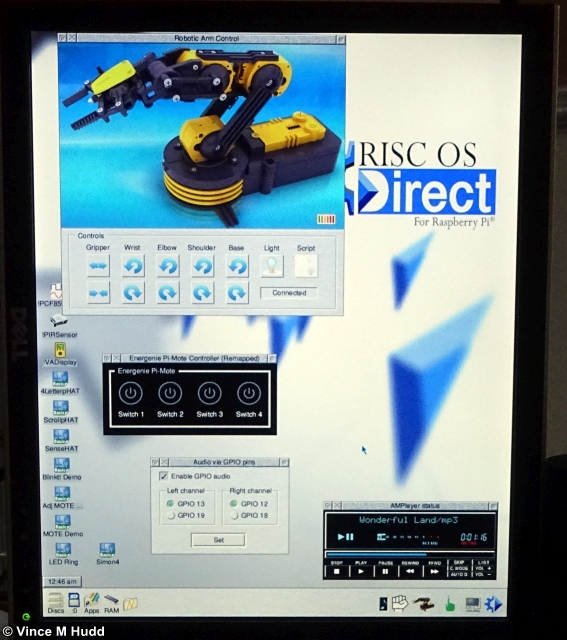
Andrew also organises the Southampton RISC OS User Group (SROUG) meetings, which – when we aren’t all staying at home due to the pandemic – normally take place from 7:00pm until 9:00pm on the second Tuesday of each month at the Sports Centre of Itchen College.
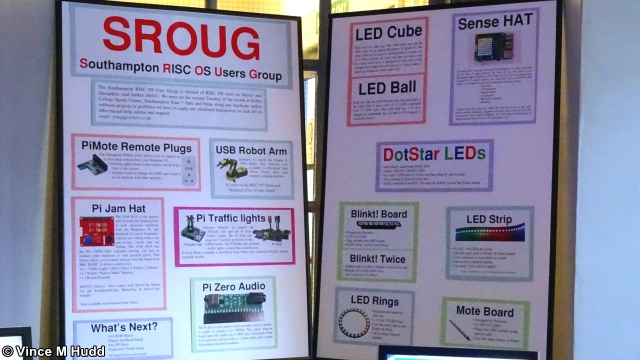
Now, you may have noticed that I said Andrew’s software was running on something called RISC OS Direct and then, without further mention of that, I switched to the topic of the user group meetings he organises. So what’s RISC OS Direct? Well, if you don’t already know you could find out by reading the 2019 London Show Report, or this piece I recently wrote on the subject, or you could just keep reading – it’s going to come up again in this report!
Orpheus Internet
Immediately after Andrew, Richard Brown was talking up the services of Orpheus Internet.
Orpheus is the most RISC OS-friendly internet service provider there is – you can’t get much more RISC OS-friendly that having one of the platform’s three main UK shows part-organised by the guy that runs the ISP! Richard, in cahoots with R-Comp’s Andrew Rawnsley, organises, well, this very show.
The company provides a range of both ADSL and fibre connectivity options, which bring with them 50MB of web space, two mailboxes (with a small selection of domain names to choose from), usenet access, and – of course – the support of someone who not only knows about RISC OS, but actually uses it himself.
A selection of hosting packages are also offered, with varying features (and sizes/quantities of some of those features) according to price – and, again, the magic ingredient is Richard’s support.
RISC OS Developments
After speaking to Richard, you could move along to the next stand and speak to, well… Richard!
Or possibly Richard, instead.
The next exhibitor was RISC OS Developments, the relatively new company formed by Richard Brown (Orpheus Internet) and Andrew Rawnsley (R-Comp) to try to fund development of a more capable web browser for the platform. However, while that was the original raison d’être, the company is now responsible for a whole lot more.
Browser development is underway, but the road from formation to where things are today saw a few slight detours along the way; the company bought out Castle Technology, for example, and thus now owns RISC OS itself, and has made it fully open source under the Apache 2.0 licence – their big news of 2018. And in 2019 the big news was that the company had acquired the Impression family from X-Ample Technology (who had originally taken it over from Computer Concepts) – allowing oversight of the 32-bit conversion of Impression Publisher (as Impression-X), as well as the release of Impression Style for free.
For the last few years, the conversion of Impression Publisher to 32-bit – a mammoth task, given that it’s a very large and complicated program, with many support modules – has been undertaken by Richard Keefe; the second of the two Richards to be found on or around the RISC OS Developments stand, and specifically answering questions relating to Impression.
2019 also saw RISC OS Developments announcing a partnership with Wi-Fi Sheep – who we’ll come back to later – to release a new distribution of the operating system, and an accompanying video series, both aimed at Raspberry Pi owners, to try and encourage more people to try out RISC OS on the platform and provide an easier route in for newcomers. The video series in particular is targeting those newcomers, who may find some of the things we take for granted – such as apps loading onto the icon bar – unexpected and confusing.
Both the distribution and video series would be branded as RISC OS Direct (See? I said it would come up again in this report – and this won’t be the last mention!) – and the 2020 Southwest Show saw the official launch of that distro and the first episode of the video series.
Richard Brown took to the show theatre (video) to talk about and demonstrate RISC OS Direct, and the goals behind it – such as the plans to attend Raspberry Jams and give away SD cards with the disc image already installed and ready to run. (That plan is obviously now on hold – but it will presumably be returned to when normal life can be safely resumed.)
Richard was being assisted on both the Orpheus and RISC OS Development stands by his daughter, Serena, and some additional helpers:
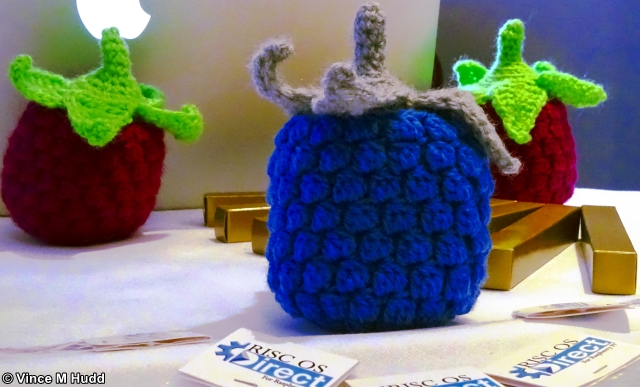
Thankfully, these Tribble-like helpers don’t reproduce in the way actual Tribbles do; the ‘cute’ aliens are born pregnant – and I’m not aware of these berries having reproduced at all on the day. Phew!
MW Software
Making a very welcome return to the UK, the next exhibitor was Martin Wuerthner – his first time at a show in the UK since the 2018, and therefore his first time at this particular venue.
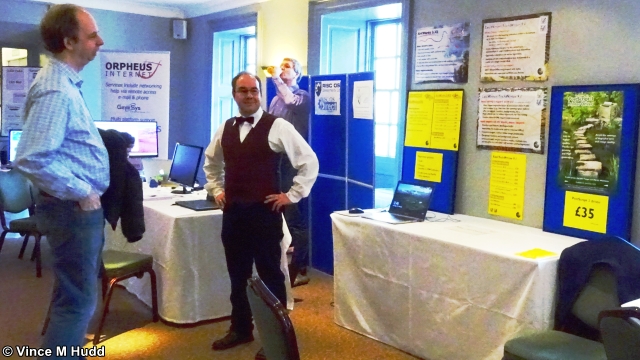
Although there were no new versions of any of MW Software‘s products, this was an ideal opportunity for users to talk to Martin to seek help or advice on how to do something with applications like ArtWorks and Tech/EasiWriter – and, for those not on the latest versions, to upgrade.
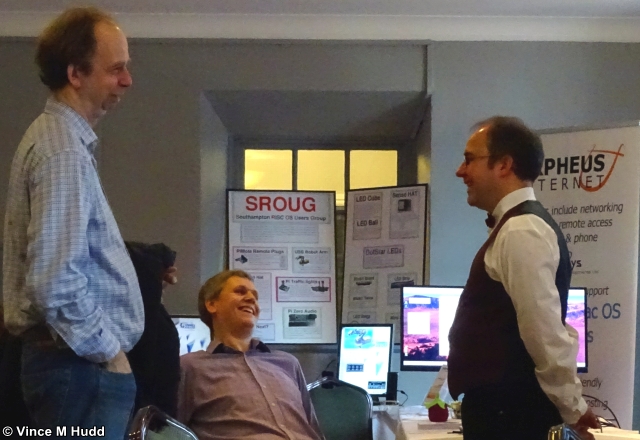
Soft Rock Software
The Soft Rock Software stand was the scene of a mini-riot as people tried to claw their way to the front of the queue in order to grab a bargain in my stock clearance; I was selling RiscPiC cases for the Raspberry Pi at below cost in order to get rid of the remaining few.
Well, that was the scene in my imagination, rather than what really happened at the show – where everyone was orderly and well behaved. And my stock was only very slightly cleared as a result. (To be fair, even though the price at which I was selling them was less than what it cost me to have them made, it was still higher than ideal.)
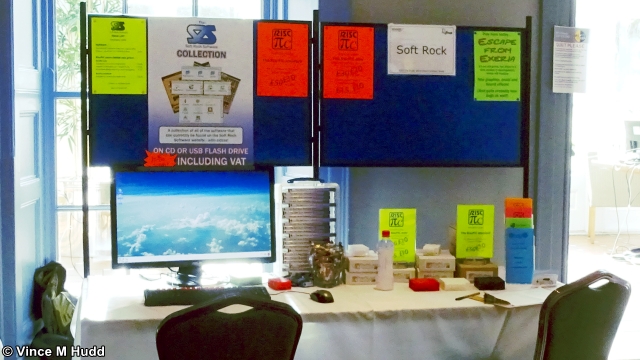
The Soft Rock Software ‘collection’ was also available to buy on either CD or USB flash drive – and, as usual, there was confectionery available in a glass skull for visitors to enjoy.
And for local users, I was able to provide information on the local group – Bristol RISC OS Users – and when the meetings would be taking place if we weren’t all now staying home instead. Still, at least we’ll always have Paris the mailing list.
Wi-Fi Sheep
Between my small space and the next in the Great Hall there was a portal to another realm, beyond which dark magic was being wrought so that beings far and wide could peer into our world…
Well, Arthur C. Clarke did once say that “Any sufficiently advanced technology is indistinguishable from magic” – and through that door was where Wi-Fi Sheep‘s Tom Williamson had set up his studio to live stream from the show – which certainly wasn’t done (and probably can’t be done in any useful way) using RISC OS itself, even if the subject matter was RISC OS. That makes it sufficiently advanced technology to RISC OS users. Right?
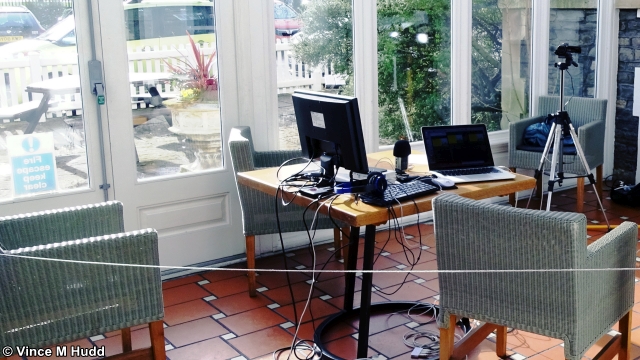
The full live stream from the show remains available to watch – all five and a half hours of it – but Tom has also subsequently edited that down into a more manageable highlights video, running at a little under an hour and a half.
Both of those include the first episode of the RISC OS Direct video series (I said it would come up again, didn’t I?)- which is itself available to watch separately, and since the show episodes two and three have also been uploaded. So, because I’ve been so slow writing this report, here are all three:
- RISC OS Direct episode 1: Getting Started with RISC OS
- RISC OS Direct episode 2: Setting up and the User Interface
- RISC OS Direct episode 3: Gaming and Emulation
The big question is: Will the fourth episode appear before I finish and publish this report? If you see this paragraph, it hasn’t – otherwise it will be listed above and this will disappear!
RISC OS User Group of London
Back to the show itself, and the next exhibitor was Bryan Hogan on behalf of the RISC OS User Group of London (ROUGOL), encouraging visitors to venture into the beating heart of the nation to attend the group’s meetings. In less unusual times, meetings often feature an interesting presentation given by someone talking about their latest RISC OS product – or project – and sometimes by people from the platform’s history, or even from beyond the RISC OS world but talking about something relevant.
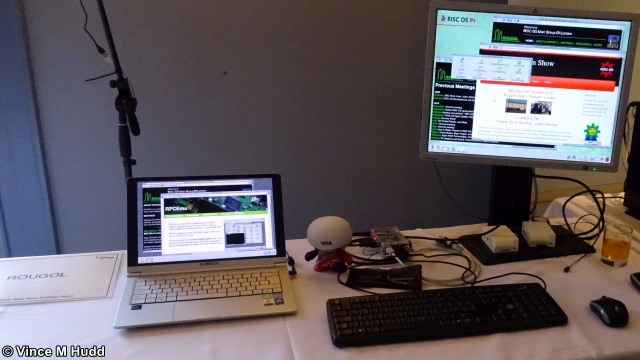
Bryan was also promoting the next London Show, which is currently scheduled to take place on 24th October at the St Giles Hotel in Feltham. At the moment, the show is still on the cards, but keep your eye on the show website and the usual RISC OS forums forums – and, of course, RISCOSitory – in case anything changes.
Sadly, I strongly suspect it will change – while I’m sure the UK’s current degree of lockdown will differ (to some degree) by then, I’m expecting some restrictions to remain in place, or to be reinstated by that time of year if they’re lifted in the meantime. One of those that I’m anticipating will either remain in place or be lifted and then reinstated will involve ‘mass gatherings’ – particularly in enclosed spaces.
On the bright side, if that is the case it should mean the Southwest Show 2020 ought to win the best show or event category in the RISC OS Awards next time around. Every cloud, and all that!
(Speaking of the Awards – have you voted yet in the current poll, reflecting 2019? If not, the form will be open until the end of May at least – so don’t forget to do so!)
RISC OS Open Ltd
While developments about RISC OS can come from many directions and sources, actual development of the operating system (or its primary source tree) is overseen by RISC OS Open Ltd – the next exhibitor.
The company had the usual range of goodies available – SD cards for use in the Raspberry Pi (basic OS and ‘epic’ versions featuring a raft of software), and for use in the BeagleBoard, USB flash drives with RPCEmu set up and ready to run, ROMs suitable for the RiscPC, and various manuals.
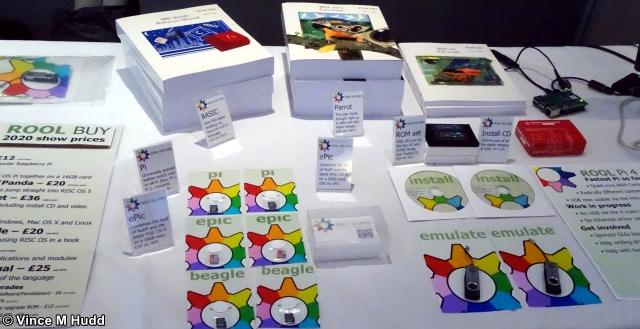
Those all being things that could be directly used in computer systems (or in conjunction with them in the case of manuals), there were also things that could be used away from the computers – the items of apparel introduced at the London Show.
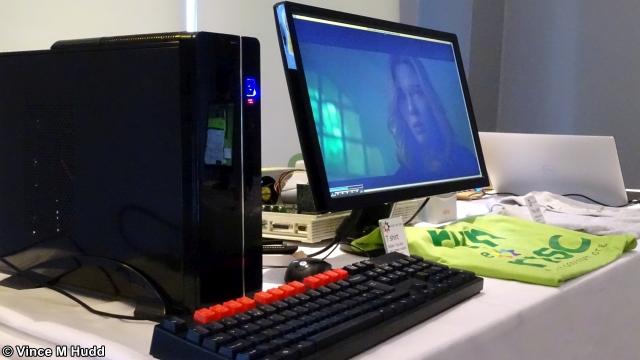
The company’s talk was delivered by Steve Revill.
Amongst the topics covered was that the next ‘stable’ release of the OS is on the horizon – RISC OS 5.28, as it will be known to its friends (that’s all of us, folks). A ‘stable’ version means one that is static and unchanging, in essence a snapshot of the operating system at a fixed point – and for the OS the custom is now that these are the ‘even’ numbered releases. These are immediately followed by an odd numbered release, which is the development and test version that will lead to the next even one.
For example, 5.26 was the last stable version, and remains the same now as it did when first released, but no sooner than that came out 5.27 was born. 5.27 changes frequently as new code is added, old code is changed (eg to fix bugs) and so on – and is what will ultimately become 5.28, and then 5.29 will appear and will change frequently, and so on.
To coincide with the release of RISC OS 5.28, an updated version of the User Guide is planned to match it. The last version of the Guide corresponded to RISC OS 5.26, and Steve reported that once the last remaining copies are sold, a PDF version will be made available as a free download.
The Raspberry Pi 4 was also discussed, covering why there was not yet a version of RISC OS available for it – which is mainly down to the lack of documentation from Broadcom. The underlying architecture used for the components of this Pi are significantly different to previous versions, and apparently RISC OS isn’t the only operating system struggling to keep up. However, Steve did note that while the USB ports (for example) can’t be used as yet, it’s possible to attach a hub to the power socket and connect a keyboard and mouse that way – something that was in fact being done elsewhere at the show, so we’ll come back to this later!
Apparently, the latest developer tools – DDE29 (Desktop Development Environment 29) – was released back in October, which I must have blinked and missed at the time. However, on the subject of the tools, a welcome initiative was being introduced: New developer kickstart.
Given the price of the tools, which isn’t a huge expense but is a bit of a barrier, or at least a sticking point when the operating system they target is free, the idea is to offer a limited number of copies for free to new developers who can make a good case to the company (succinctly in no more than two paragraphs) as to why they deserve a copy. If they’re successful, What they will receive is the ‘Nut Pi’ edition of the DDE – i.e. the version that runs on the Raspberry Pi only, although the software produced by it isn’t similarly constrained. ROOL’s announcement about this contains more details.
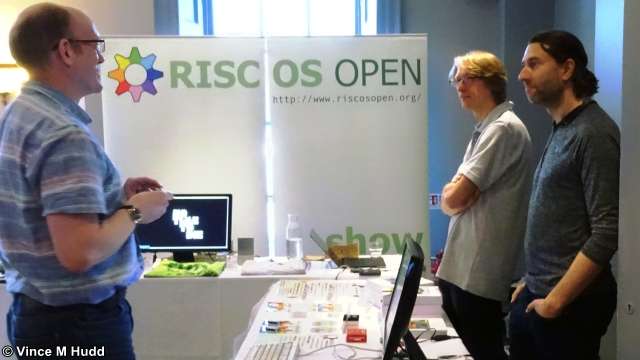
Tasty Treats
Venturing through the door into the second room, the first thing likely to catch your eye would be John Norris’ bell-ringing frame – but the first table was where John’s wife, Mary, had her selection of jams and chutneys available for people to buy.
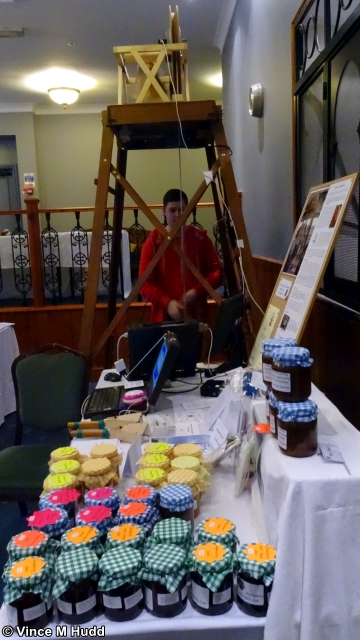
Unfortunately, by the time I made my purchase, my preferred flavour had already gone – but a potential day-ruining disaster was avoided because I do like other flavours as well, just not as much!
John Norris – bell ringing
Then we come to John, with the wooden frame and a papier-mâché bell attached to the top. Ringing sounds are played by computer, which uses a sensor in the frame to detect when the bell swings by, and would therefore ring out if it was a real bell.
The computer is actually playing the full sequence, but omitting the sound of one bell unless the sensor indicates that it should be played – the person positioned in the frame triggers that bell’s sound by swinging the it, and is therefore able to practice their part in that particular sequence.
The same trick can be employed with handheld bells – and there were a couple of wooden mock-up bells on the stand, with a sensor inside to register when the clapper swung past.
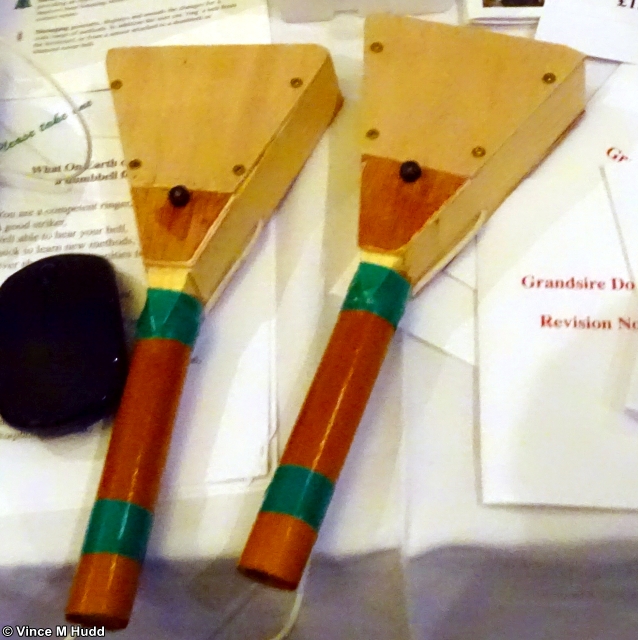
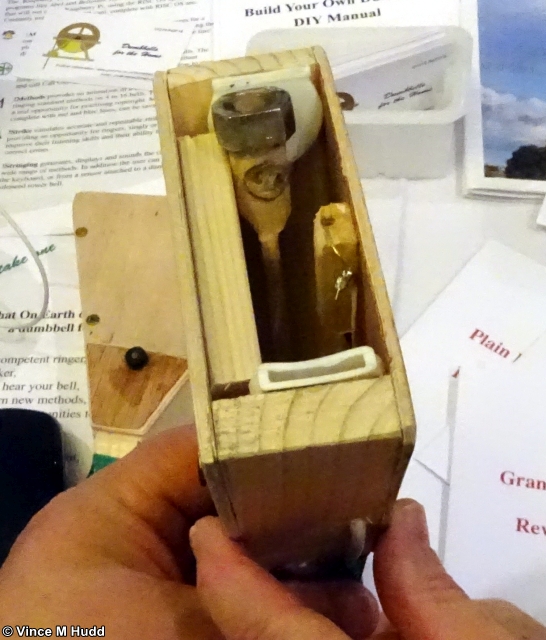
Visitors were able to buy a number of items from the stand, such as miniature bell ropes, booklets – and ringing notecards. With no knowledge of the subject at all, I was curious about one aspect of these.

I’d assumed that the coloured pattern on the front of these packs were just that – coloured patterns. However, Mary explained to me that these patterns represent the actual bell ringing sequences – each coloured line represents each bell, and its path depicts how the bell’s position changes in the sequence.
I think I’ve got that right!
Chris Hall
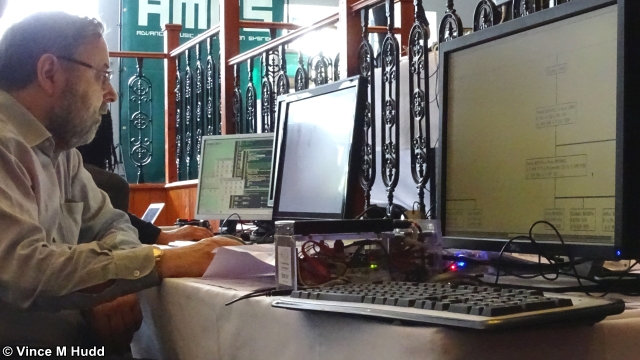
As well as demonstrating his FamTree software and SatNav and Data Monitor (Pi-based) hardware, Chris was also using a Raspberry Pi 4 at the show, running RISC OS 5.27.
Corresponding with what Steve Revill described in his RISC OS Open talk, a powered USB hub was providing its juice, as well as providing keyboard and mouse connections, since the normal USB sockets were not yet usable. Also currently unsupported is the ethernet socket, but here a wireless network connection was available via a WiFi HAT from Elesar, which connects to the GPIO pins. With this set up, the Pi 4 was happily running RISC OS – although it apparently got a little warm.
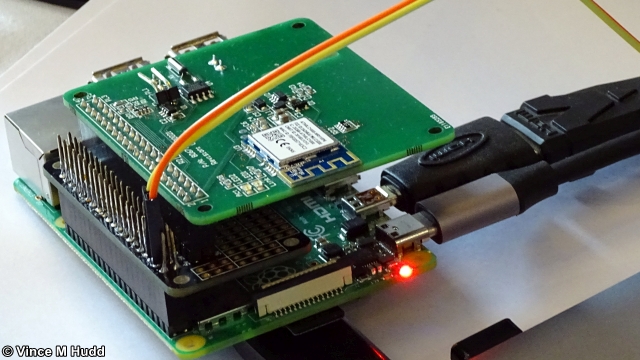
Having worked on the updated Impression manual, which is supplied as a PDF, Chris had also brought along a couple of copies that he’d printed himself, along with printed copies of the second edition of the Impression newsletter that he’s recently started.
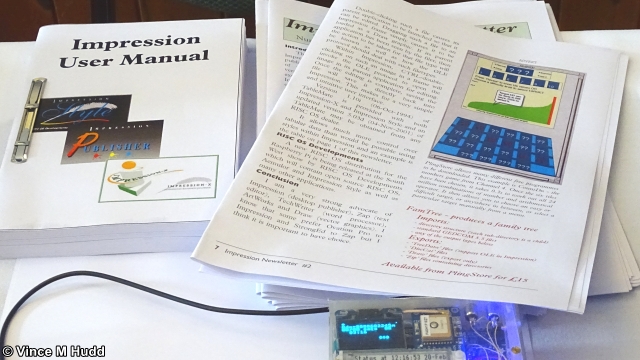
Gareth Lock / Dynabyte Software
A simple gaming experience was available on the next stand, where Gareth Lock was demonstrating Quizzics – a multiple-choice quiz game.
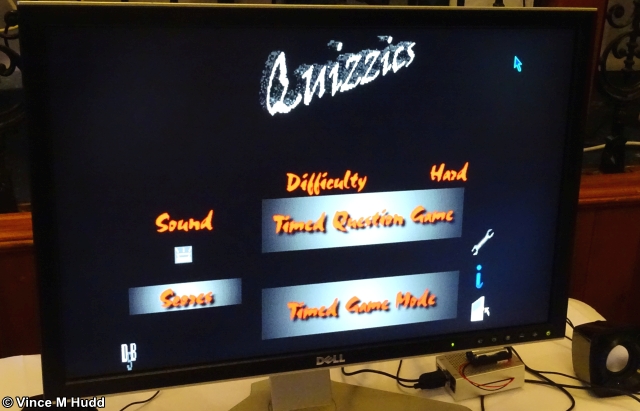
The game offers two main modes of play – with each question being against the clock, or the whole quiz needing to be completed in a certain time – as well as user-selectable difficulty levels. A question editor is also included, so the question-set can be tailored according to need; so you can target certain age groups, for example, or theme them according to a common interest – ideal for a bit of family fun in the middle of a lockdown, perhaps!
Gareth also showed me a current work-in-progress, a Breakout/Arkanoid type game called Brix, in which the objective is to bounce a ball against a number of rows of coloured bricks, to remove them from play and eventually clear the screen and move on to the next. (Not to be confused with puzzle game Brix, written by Stuart Bruce, and included on the old APDL Soft Rock Games Collection CD!)
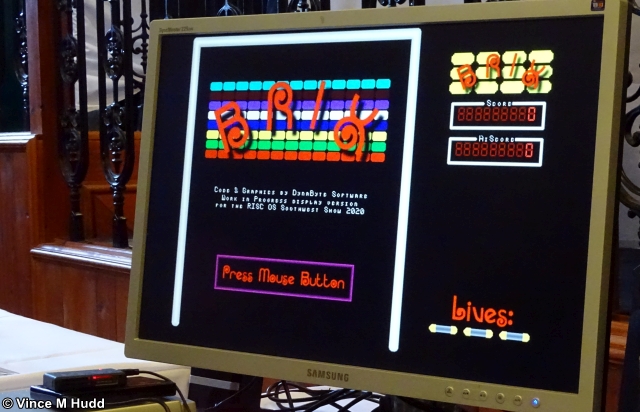
Cameron Cawley
ScummVM is a ‘virtual machine’ that allows a number of ‘point and click’ adventures to be played, and the RISC OS port is maintained by Cameron Cawley – the next exhibitor – who was showing off the latest version.
The games themselves need not have been released for RISC OS – only written using a system that the software understands; provided you have the necessary data files for the game, ScummVM does what the original executable would have done, and interprets whatever was in those data files. What is then displayed on screen is what the original executable would have presented on screen if it was running on its original target platform.
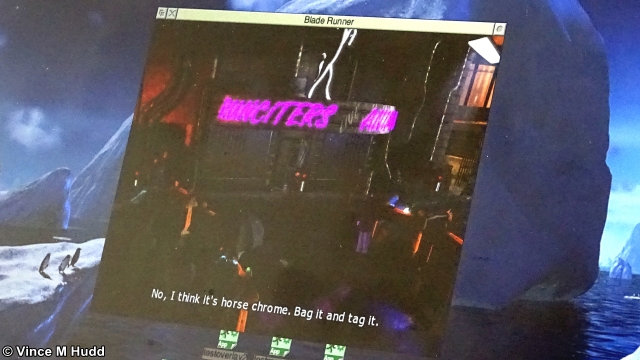
Another engine, enabling a very small number of 3D adventures to be run on modern systems using a similar technique – replacing the original executable in order to act on the games’ data files – is ResidualVM. The system’s website currently only has versions for certain other platforms, and it’s clear that ResidualVM has yet to reach an entirely stable version – but Cameron showed me his current work-in-progress; a port to RISC OS.
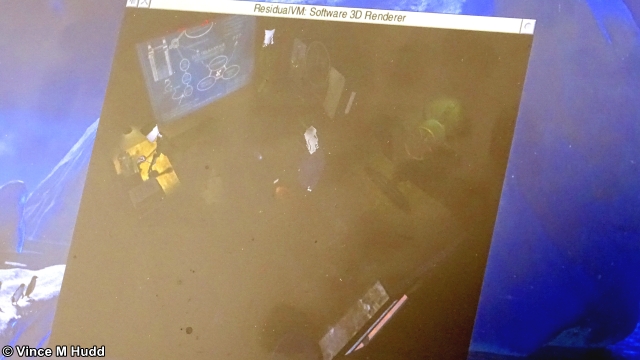
Rob Coleman and the Acorn and BBC User Group (ABUG)
Unfortunately, I didn’t get to speak to the next exhibitor, Rob Coleman, but one of the things that he would have been exhibiting was his hardware add-on for the BBC Micro. VideoNuLA enhances the computer’s graphics capabilities massively, offering – amongst other features – a much greater selection of colours. The original hardware offered a selection from eight colours, plus eight flashing combinations – but with VideoNuLA, the there are 4,096 to choose from.
Another highlight would almost certainly have been his port of Doom. Many ports of the game exist, bringing the first person classic to many platforms – but in this case, we’re talking about an 8-bit one; the BBC Micro (although there is some cheating involved, with some functions farmed out to a Raspberry Pi).
Rob was also representing the Acorn and BBC User Group. Via the Stardot forums, the group organises gatherings – the locations of which vary because members come from different places – at which attendees show off and discuss what they’re working on and help one another out in various ways.
3rd Event Technologies
Music sequencing was the focus of the next exhibitor, 3rd Event Technologies, where Quincy Coleman (qUE) was showing off the Advanced Music Creation System (AMCS).
As a software project, AMCS began its life on RISC OS – but it grew beyond that and is no longer a simple application that runs on top of RISC OS; it includes its own operating system – though development still takes place on RISC OS.
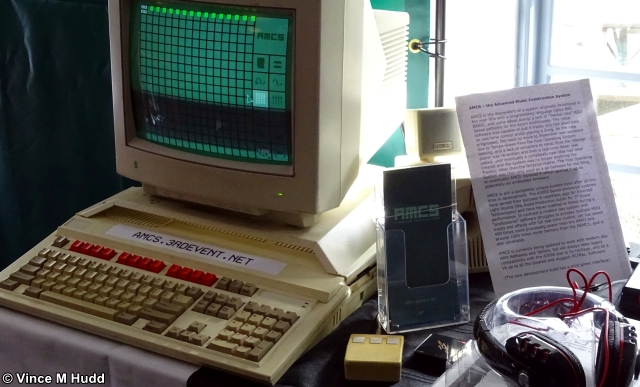
qUE’s platform of choice for development – and on which the software therefore runs – is an Acorn A3000, but it has now been ported to other ARM-based platforms, such as netbooks from Wondermedia, and from those to a VIA Technologies APC8750 board, which now forms the heart of the AMCS WW7 Workstation; an all-in-one hardware solution, with 512MB RAM, four USB ports, VGA and HDMI outputs, and so on.
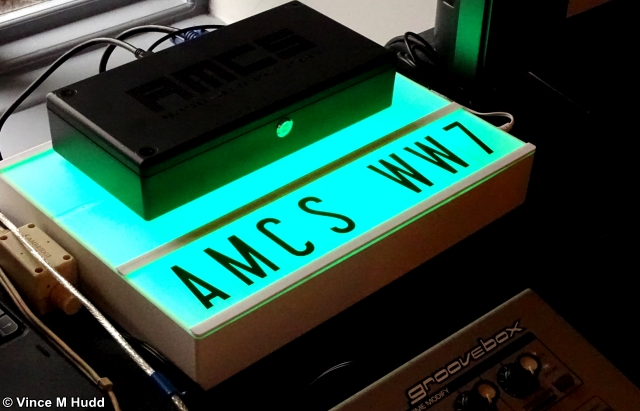
AMCOG Games
If you like the idea of exploding sharks, the next exhibitor – Tony Bartram of AMCOG Games – had exactly what you were looking for.
Tony’s latest title is called SCUBA Hunter, and pits you as a cave diver trying to collect all the sunken and hidden jewels. As you explore the undersea world, you may need to push rocks out of the way to gain access to different parts of the cave system – but take care of how and when you do so, because you may end up blocking your own accessways. You need to avoid the various creatures that are also roaming the caves, including those sharks – but you can eliminate them by pushing the boulders into them. That’s when they explode.
Despite the size of the diamonds, you don’t need to say the immortal words “We’re gonna need a bigger boat diving bell“; you simply need to swim back to the starting point – that diving bell – and move on to the next level.
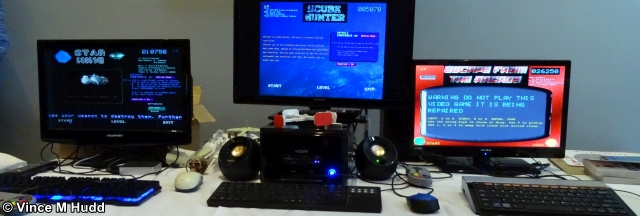
As well as the new game – priced at £9.99 and also available from !Store – other individual titles from AMCOG were available, such as Stunt Race, Star Mine, and so on, along with compilations, and the Development Kit – a set of libraries and tools to get you started writing computer games in BBC BASIC.
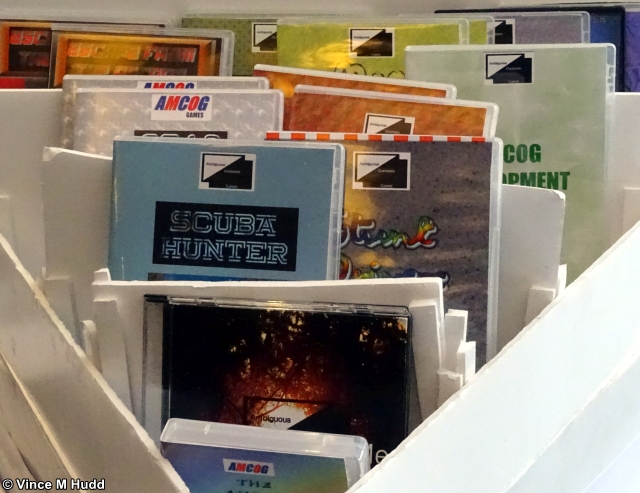
Drag ‘n Drop
The final exhibitor on this path around the second room, Christopher Dewhurst was punting the latest edition of on-off-on-off-under-new management PDF magazine Drag ‘n Drop.
Volume 10 issue 2 – or the Winter 2020 issue – features a look at the ARMbook, R-Comp’s ARM-powered laptop, a review of Star Mine (released by AMCOG Games at the 2019 London Show), a feature on 3D graphics, and another on producing rounded boxes – with the aid of a type-in-listing – and, as usual, much more.
The magazine can be bought online from the website, or via !Store (with the option of buying a copy with the type-in listings already typed in) – and on the day, it was also possible to by a USB flash drive containing not just this issue, but all the back issues as well.
Chris also sells a number of books and CDs, and is planning a new addition to the selection in the near future – a CD covering WIMP programming.
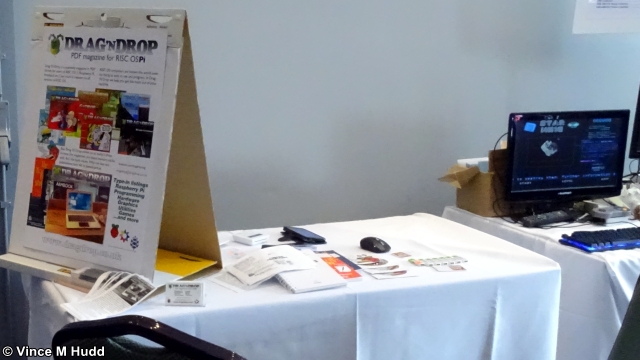
R-Comp
Back in the main room, the next exhibitor was R-Comp with a growing range of hardware on which RISC OS can be run, and software to run on that hardware.
Hardware included emulated solutions such as the RISCube and RISCbook – which have Windows as their primary operating system, on which VirtualRiscPC is installed so that RISC OS is available.
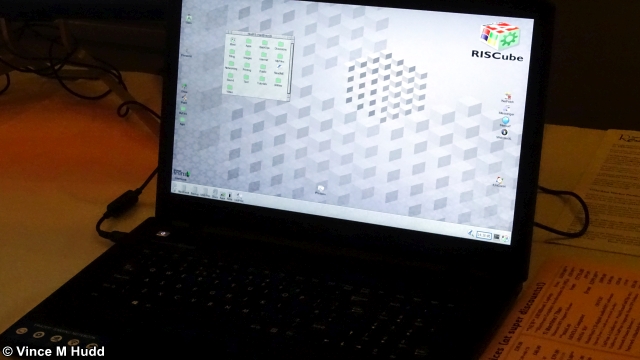
Native solutions, with RISC OS running directly on an ARM processer, were also available with desktop machines like the ARMX6, mini.m, and Titan – and on a laptop; the ARMbook. This is a Pinebook from PINE Microsystems Inc., to which RISC OS has been ported – one of the beneficial consequences of the change from a shared-source to an open source licence for the operating system.
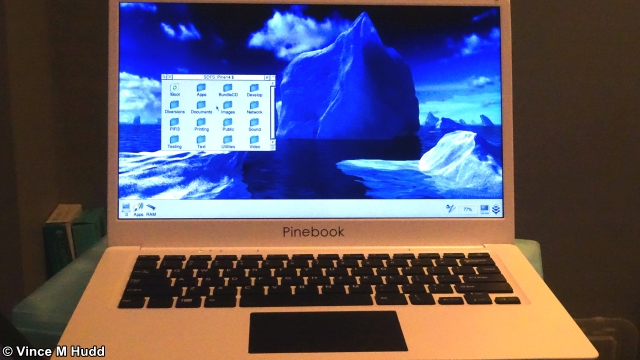
Andrew gave one of the show’s talks, and I understand that this presentation was in two distinct parts – the first being about the RISC OS Developments web browser projects; a demonstration of the work so far. However, because I was busy at my own stand, I wasn’t able to get to my camera to start it recording in time to catch this part of the talk – but the point at which I was able to start recording seemed to neatly coincide with where Andrew changed hats, and began his R-Comp talk.
In that part of the talk, Andrew started off by showing the ARMbook to the audience, and talking about the various features included with it – including additional software such as LockScreen. From there, he went on to talk about LockScreen itself – a neat segue from hardware to software – to be followed with a very brief comment about other software products.
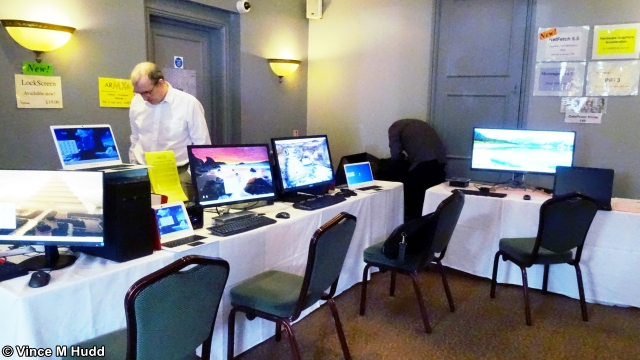
Adrian Lees
The next exhibitor was Adrian Lees, who was showing people the latest versions of eVince and Geminus.
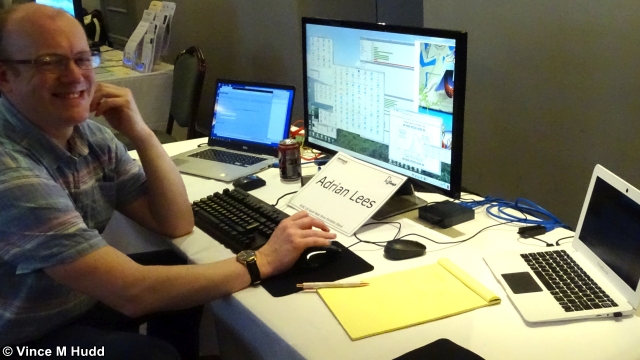
Geminus started life on the IyonixPC from Castle, and provided a number of graphics features not present in the operating system – such as graphics acceleration, and screen rotation. Versions have since been developed for computers like R-Comp’s ARMX6, and greatly enhances some operations – moving windows around on the desktop being a seemingly simple task, for example, that benefits greatly if there is a high resolution image used as the pinboard backdrop.
eVince made its first appearance in public at the 2019 London Show, and it is a very capable VNC client with some impressive features. Ordinarily, a VNC client allows the machine on which it is running to present the screen of another machine, running a VNC server, and to allow interaction with (and control) of that machine from the first. However, amongst other things, eVince will allows seamless operation of multiple computers side by side – so you can switch between them, using the same keyboard and mouse, without having to mess around ensuring the right computer is accepting input from the keyboard and mouse, etc.
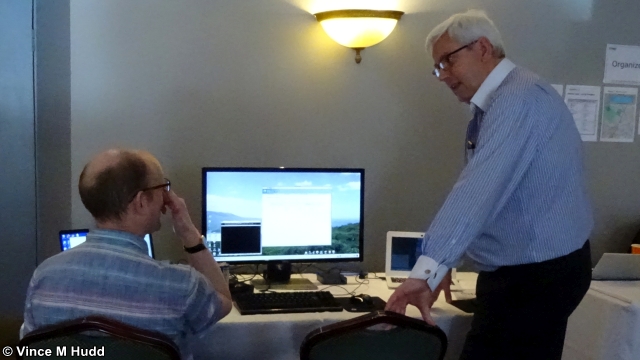
Organizer
North One Communications Ltd was represented by Nigel Willmott, with the latest update to Organizer, the – no THE – personal organiser for RISC OS.
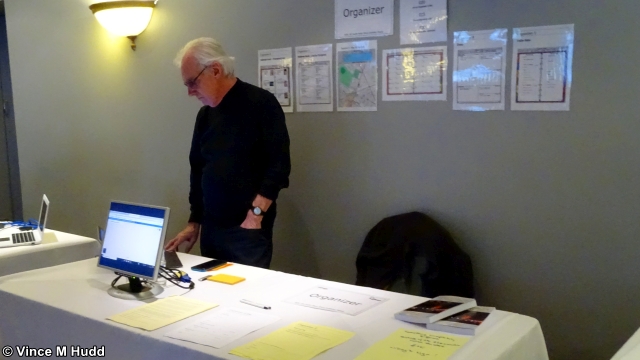
Version 2.20 of the application, which saw its launch at the show, benefits from a completely rewritten address book component, to upgrade the vCard format used by the software from version 2.1 to version 3.0. Apparently, this is a preparetory step, readying the application for cross-platform synchronisation.
The iCal export scripts have also seen improvement, and there is now a 32-column, 364-day window in the diary. Changes have been made under the hood as well, with the compression program replaced, better memory chaining, and better stability.
Visitors could buy upgrades for their existing copies, or new copies if they weren’t already users, for running on their existing RISC OS computers – and the ‘on a Stick’ version was also available; a USB flash drive containing a ready-to-run copy of RPCEmu with Organizer installed, providing a method of accessing it from any suitable computer available.
Copies of a book Nigel had co-written were also available:

Published by North One Communications, Drama at the Palace 2 offers a detailed look at the history of the Alexandra Palace Theatre, covering the years 1901 to 2019. It’s the second book in the series (as if the ‘2’ didn’t make that obvious), with the first covering the period 1873 to 1901.
Steve Fryatt
Next, Steve Fryatt was selling CDs containing his various titles, with the money raised heading in the direction of a good cause – I believe (and I’m happy to be corrected if necessary) the British Heart Foundation.
The various pieces of software on the CD (all of which can also be downloaded from Steve’s website) include CashBook to help keep a track of your pennies, PrintPDF to produce PDF files using the RISC OS printing system, Locate to find those PDF files when you lose them (or is that just me?), and much more.
Last year’s Wakefield Show saw the release of a new (but old) piece of software called Launcher – also on the CD, of course – which Steve had been running for years, and had finally tidied up into a version that could be released. And at this show he was showing off a new version that he was hoping to release at this year’s Wakefield Show, had it gone ahead. If you want to try out that version – or, more accurately, an even newer version, since he’s done a little more work on it since, visit the ‘Test Builds’ page on his site.
RISCOSbits
The majority exhibitors were along the outside walls, and the last of these was RISCOSbits, where Andy Marks was showing off almost enough different cases and systems that if every RISC OS users purchased one, they could all still be unique.
Well, okay, that might be a bit of an exageration, but there is certainly an impressive range available – and there was an equally impressive selection on display. A particularly nice example that caught my eye at the show was a Deuce case – in oak!
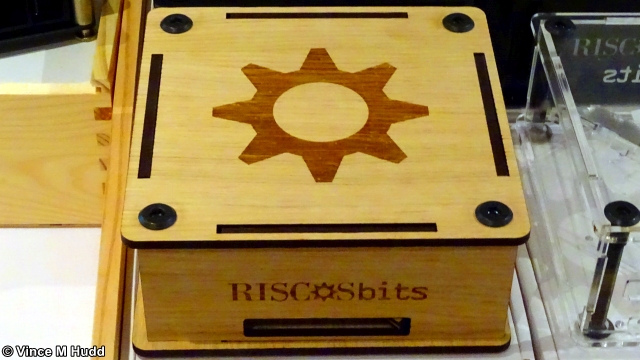
The Deuce is suitable for housing either a Wandboard (as found in R-Comp’s ARMX6) or a Raspberry Pi – with room inside for a hard drive – and this example features a snazzy looking oak veneer.
As well as cases, Andy is also able to supply systems – a case with RISC OS bits inside, if you will – and one example is the si.zeRO; a RISC OS system based around the Raspberry Pi. An addition was made to the range in time for the show, called the si.zeRO MAX – which, while maintaining the system’s tiny form factor, now includes a 32GB hard drive.
Another option that has been on offer for a while is the PiPOD – a system that allows a Raspberry Pi to be mounted in a RiscPC or A7000 podule slot to provide two systems in one. An updated version of the software component now means the Pi’s USB ports can be shared with the host machine, and any others on the same network.
And then there was this:
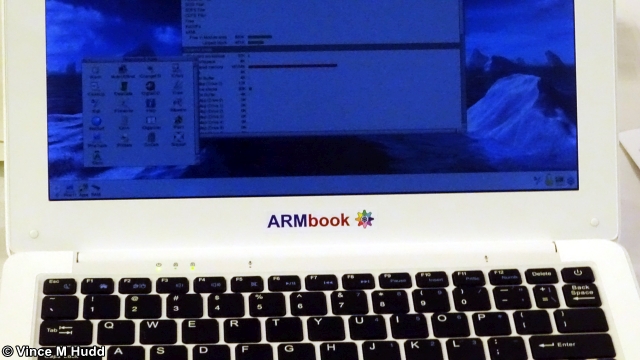
Now you might be wondering what’s so specual about an ARMbook – and in particular, what’s so special about it being on the RISCOSbits stand? In which case, look a little more closely – specifically at the name below the screen.
Okay, here it is from a different angle so it’s more obvious:
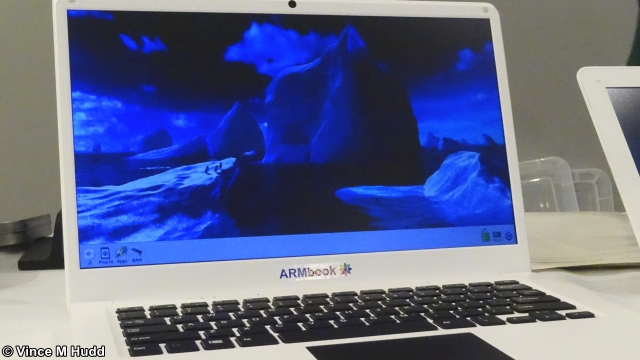
Yes, the point is the branding. The ARMbook, as supplied by R-Comp, carries the Pinebook branding – Pinebook being the name given to the laptop by the company that makes and sells it, and ARMbook being what R-Comp calls it when it then sells it to you with RISC OS installed and ready to run.
What Andy was selling on the RISCOSbits stand were skins for the ARMbook with suitable (re)branding. More than just a branding exercise, though, these were protective vinyl skins that help to keep the machine free of scratches, etc., and were available either as clear matte, or white carbon.
Charity
Although RISCOSbits was the last exhibitor on the path around the outside edge, there was one other stand taking up three tables in the middle of the main room – the charity stand.
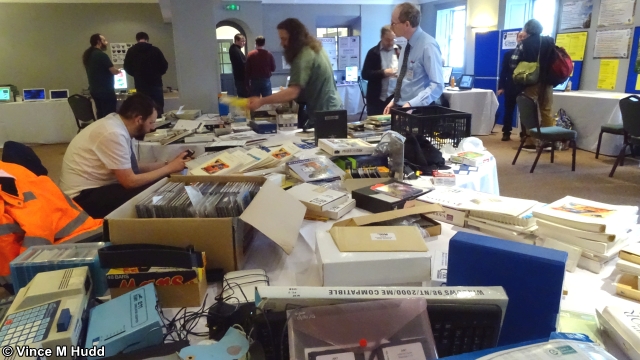
The selection of items available this year was as wide as ever, with books and magazines, hardware and software, the latter on floppy disc and CD – and I even spotted some items on what I thought might have been a new-fangled storage medium, but turned out to be something old, apparently called ‘cassette tape’.
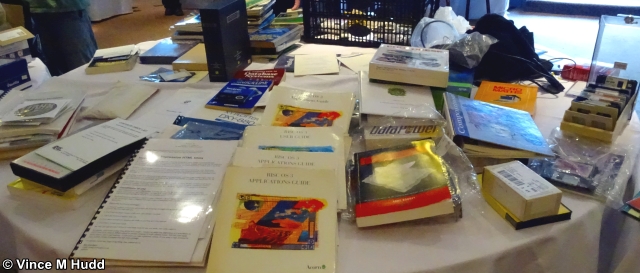
The total amount raised this year was £230, which was sent to Children’s Hospice South West, whose aim is to provide hospice care for children with life-limiting conditions; another worthy cause selected by the charity stand team.
Stefan Fröhling
So if RISCOSbits was the last exhibitor following the path around the outside, and that just left the charity stand, in the middle of the main room, who is Stefan Fröhling and why am I mentioning him now?
The answer to the first part of that question is that he is one of the people involved with RISC OS Cloverleaf, a project with aims to crowdfund an ARM-based computer running RISC OS (and there is now a survey on the website, under the ‘vote’ link, presumably to perform a bit of market research before proceeding in any given direction).
There wasn’t actually a RISC OS Cloverleaf stand, as such – but Stefan did take the final slot in the show theatre. He talked initially about ChatCube, an instant messenger application available to download for free from the Cloverleaf website, and then a little about the goals of the crowdfunding project – which isn’t just aimed at existing RISC OS users, but also beyond the existing RISC OS market to hopefully attract new users and raise awareness of the operating system.
So that was RISC OS Southwest 2020! Roll on the next event – whichever one that will actually turn out to be – and in the meantime here are some more pictures from the day:
